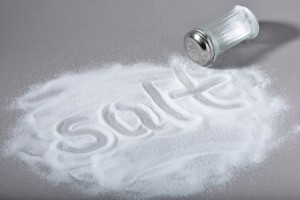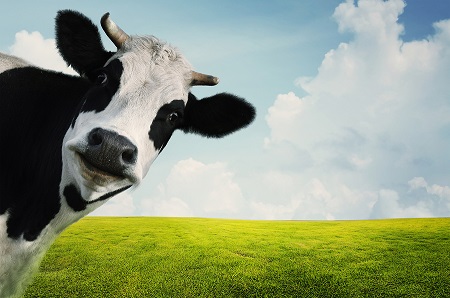To improve your fitness, constructing a good exercise plan isn’t enough. You also need to eat well before and after, and sometimes even in the middle of your workout. You also need to take into consideration that not all sports are the same, and therefore the food needs to fit the exercise.
What are the stages of sports’ nutrition?
1. Supplying energy before your workout: In order to maximize your glycogen stores (the muscles’ energy reserves) you should put an emphasis on eating a relatively high amount of carbohydrates, particularly complex carbohydrates. If the workout is relatively short, you should still have carbohydrates beforehand, but in a smaller amount.

2. Nutritional support during your workout: Emphasis should be placed upon drinking fluids, mostly water. The amount is recommended to be 1-2 glasses (8-16 fluid ounces) for every 10-15 minutes of exercise. During a long workout, you should also have carbohydrate support that can be absorbed quickly, along with minerals. This is what most sports drinks are all about. The recommendation here is to make sure there are no more than 6-8% carbohydrates, and no caffeine.
3. Rapid muscle-building: The process of muscle-building reaches its peak from the moment the workout is over and continues 30-45 minutes afterwards. That is why this timeframe is considered a “window of opportunity” for the muscles. During this stage, it is very important to consume a combination of carbohydrate and protein that will assist in building the muscles.
4. Slow muscle building and recovery: This process starts about 2-4 hours after the workout, and continues for 24 hours and even longer following the workout. This is a very important stage for people who prefer longer workouts (longer than 2 hours) or especially intense workouts. From this stage onward is where adequate, balanced nutrition should be the basis for each meal and snack.
How do you adjust your diet to the level of your workout?
Despite the importance of every one of the four stages, not every kind of workout requires all of them to the same degree. The following are dietary recommendations according to the three moderate-to-high target levels of exercise:
■ Medium intensity workout (up to an hour)
For example: pilates, yoga, jogging, light running, beginners’ aerobics
Those who work out moderately for up to an hour, or those at the first stages of getting into shape, don’t need to eat large amounts of food before and after their workouts. Those who work out this way have to remember that this is not the type of workout that usually depletes the body’s energy storages and causes exhaustion. Therefore, the nutritional recommendations for eating before and after contain a relatively small amount of food.
Food recommendations:
Before – Something small like a piece of fruit or 2-3 pieces of dried fruit with an 8-ounce glass of water.
During – Water: You don’t need anything more during this stage; therefore combining sports drinks, gelatin, and snacks are completely unnecessary, especially for those planning to lose weight and fat percentage.
After – It’s important to be strict about combining protein with carbohydrates, but this doesn’t mean to eat a whole steak or a pot of pasta. A 6-ounce container of yogurt with a couple of tablespoons of granola will suffice, or cornflakes with milk and even a tuna-and-egg sandwich will get the job done.
Recovery – After a light workout, the recovery stage is relatively fast and short. So there is no reason to eat large amounts of food during the after-workout hours. If the workout was held in a hot environment (like yoga with no air conditioner or a jog in hot weather), it is important to keep drinking a lot of water, about 8-10 fluid ounces every 10-15 minutes.
■ High-intensity workout (up to an hour-and-a-half)
For example: spinning, kickboxing, advanced aerobics, step class, field running, swimming, triathlon
Here we can talk about more substantial nutritional support. We’re talking about a more intense effort for a longer period of time that can deplete the glycogen stores – therefore the nutritional recommendations need to be more accurate regarding the amount of carbohydrates before and during the workout. However, this doesn’t mean bringing meat sandwiches or a large amount of pastries and snacks to the gym (the idea is to tone up, not have a picnic).
Food recommendations:
Before – Due to the importance of filling up the glycogen stores before the effort begins, it’s important to eat a relatively large amount of complex carbohydrates (like rice or pasta) three to four hours before the workout, as well as to add protein like chicken, cheese, tuna or an egg. It’s important not to overdo the amounts so you don’t arrive to your workout too full. If your workout is in the morning, it’s important to fuel up on carbohydrates during dinner the previous evening. Furthermore, it’s good to have something small like a piece of fruit, a few pieces of dried fruit and an 8-ounce glass of water 30 minutes before the workout (for instance, while driving to the gym). Don’t underestimate the nutritional preparation for this kind of a workout. If you haven’t had enough to eat and have a long hard workout, you’re risking muscle breakdown that can cause pain while exerting yourself, or difficulties in recovering for several days afterwards.
During – It’s important to drink during your workout, about two to three 8-ounce glasses of water per hour, and even an isotonic drink if the workout is longer than an hour. About 45-60 minutes after, nutritional support can take the form of a carbohydrate “snack”, such as fruit, a light sandwich, or even a glass of homemade chocolate milk. Again, this doesn’t call for cakes or cookies. It’s important that the nutritional support here would be based on light carbohydrates, protein, vitamins, and minerals, with little fat. If you’re going to have a double workout (spinning, gym, and studio classes), it’s best to have the carbohydrate in between the two parts of the workout.
After – Right at the end of your workout, it is highly important to have a little bit of carbohydrate that will help the body’s initial recovery, like a piece of fruit, a slice of bread, or 1/2-1 cup of cornflakes (even without milk). In addition to that, make sure you have servings of carbohydrates and protein within the “window of opportunity” (between 30-45 minutes). If you’re on the road, bring a sandwich with tuna, egg, cheese, or nut butter for the way back. If you’re at home, this is an excellent time to have lunch or dinner, and of course; an excellent way to end a morning practice would be a breakfast containing eggs, cheese, salads, and bread. It is vitally important to remember not to neglect the protein alongside the carbohydrate, because the strain put on the muscle requires serious attention for recovery and building after the workout while at the same time refilling the glycogen stores.
Recovery – It is quite certain that you’ll need to keep spreading out food in the after workout hours in gaps of 2-3 hours to help your body recover, but the intention is not to have a piece of cake or bag of chips, but rather give the body what it needs, and of course, in the right amounts. Also you should keep drinking a lot of water to continuously replenish fluids (we keep sweating for a while after the workout).
■ More than 3 hours of activity
For example: trail bicycling, long hikes, running navigation contests, iron man, marathon
Food recommendations:
Now we’re talking about serious nutrition! Even if you’re riding a bike very slowly, this is not an easy load on the body. Working out for 3 hours and longer requires massive amounts of effort. In this case, you need to address the amount you eat before, during, and after the workout quite thoroughly. Again, sweets and junk foods don’t necessarily supply the best fuel for the activity.
Before – Correct and comprehensive nutritional support is very important for this kind of workout. Even if you ate well before the activity (having a large meal 3-4 hours ahead of time and another small meal half an hour before), if you haven’t supplied your body with a good enough dose of carbohydrates, and you won’t eat every 45 minutes during your workout, don’t expect to have any strength left after 2 hours of rigorous activity. If the long workout is in the morning, the nutritional preparation starts the night before with a relatively large amount of complex carbohydrates like rice, pasta, potatoes, bread, etc.
During – Nutritional support during the workout is of utmost importance. It requires combining water and an isotonic drink in a 1:1 ratio, and even combining easy-to-digest carbohydrate-rich food every 40-50 minutes. A proper combination of dispersed food, water, and isotonic drinks will provide the best support in terms of replenishing your fluids, energy, and essential minerals.
After – Right after you’ve finished your activity, have a sandwich or a nice amount of easy-to-digest complex carbohydrates that will assist the body’s recovery. Also, make sure you have a large, organized meal not longer than 30-45 minutes after the workout (similar to the recommendations listed in the previous exercise level).
Recovery – It is very important to keep eating in small amounts during the 6 hours following the workout. This means that every 2 out of the 6 hours following, make sure you have more carbohydrates and also a little bit of protein. The goal is to allow the glycogen stores that were depleted during the workout to be replenished. Take into account that even 24 hours of eating right won’t restore 100% of the glycogen stores, so it is recommended to meet your preparatory nutritional needs during the previous day, and not plan similar activities. Of course, keep drinking a lot during the hours following the workout.
__________________________________________________
If you follow these principles while working out, you will be doing the best you can for your body to look its best – while not losing out on the health component.



